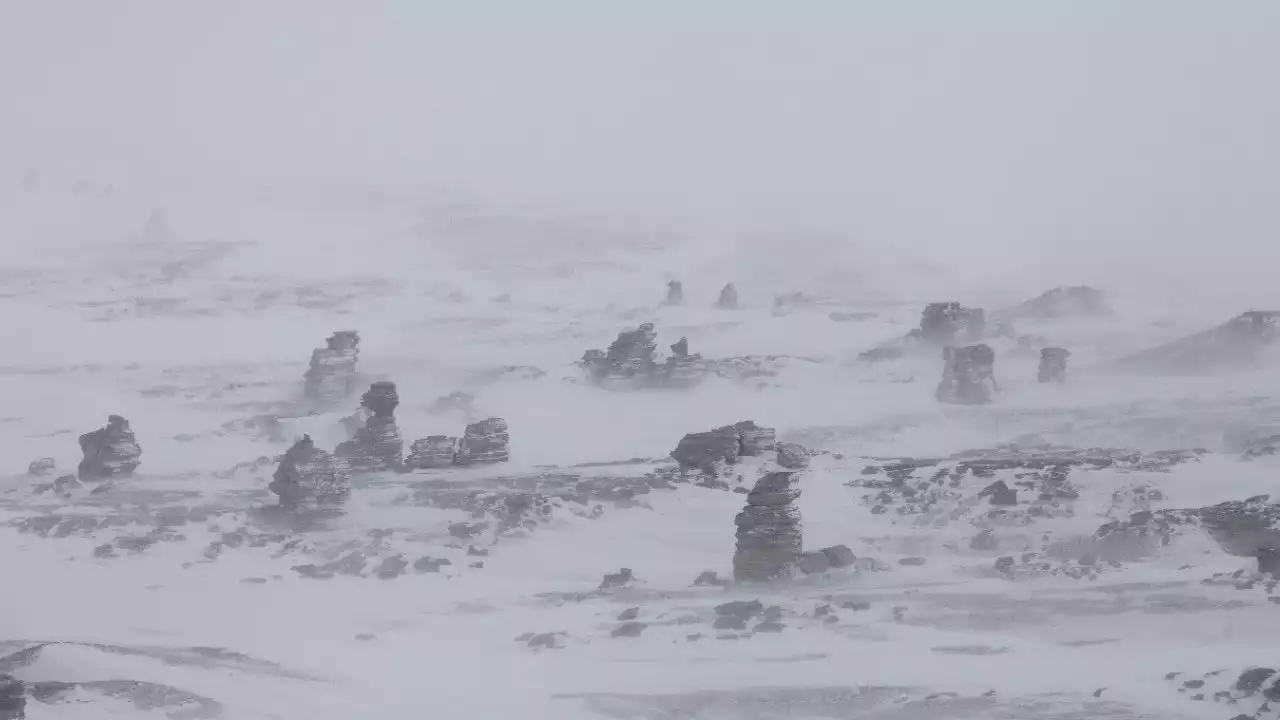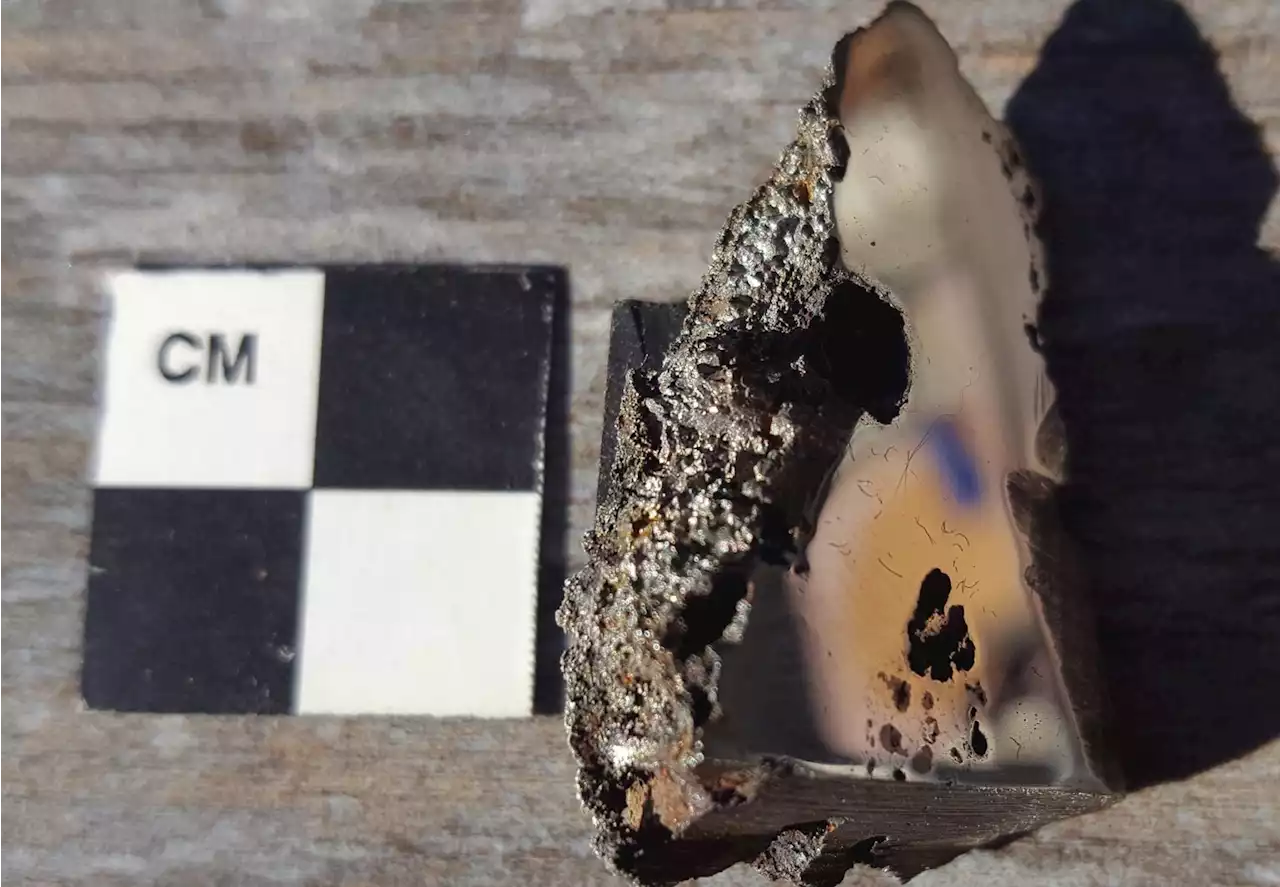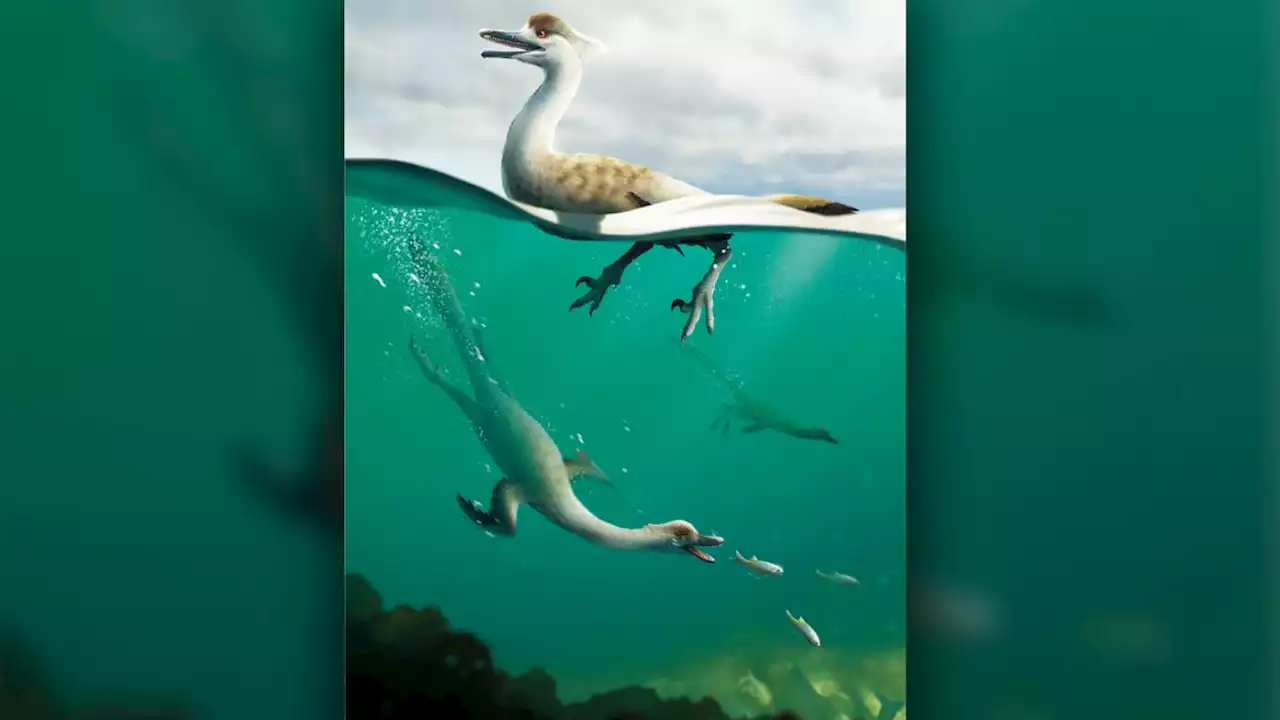Scientists recently discovered the first non-avian theropod dinosaur with a streamlined body similar to that of penguins, auks and other modern diving birds.
A dinosaur with an undulating noodle neck and a streamlined body like those of modern diving birds may have plunged through the depths of a Cretaceous sea about 71 million to 72 million years ago, in what is now Mongolia. This predator belonged to a different lineage of theropods — bipedal and mostly meat-eating dinosaurs — than the one that produced modern birds, but its body shape and limbs hint that it swam and dove as a penguin does, scientists recently discovered.
However, there isn't enough fossil evidence from Halszkaraptor and its closest relatives to suggest what their body shapes may have looked like. "The long nares [nostrils] and posterior rib orientation are only known in Natovenator because these parts are not well preserved in Halszkaraptor," said study co-author Yuong-Nam Lee , a professor of vertebrate paleontology in the School of Earth and Environmental Sciences at Seoul National University in South Korea.
Australia Latest News, Australia Headlines
Similar News:You can also read news stories similar to this one that we have collected from other news sources.
 Scientists revive 48,500-year-old ‘zombie virus’ from Siberian permafrostA group of international scientists that revived 13 'zombie viruses' is warning that the thawing of ancient permafrost could lead to a new public health threat.
Scientists revive 48,500-year-old ‘zombie virus’ from Siberian permafrostA group of international scientists that revived 13 'zombie viruses' is warning that the thawing of ancient permafrost could lead to a new public health threat.
Read more »
 Scientists have solved the mystery of male rats without Y chromosomesThe Amami spiny rat, one of the species that lack a Y chromosome and the Sry gene, has a genetic basis for sexual differentiation.
Scientists have solved the mystery of male rats without Y chromosomesThe Amami spiny rat, one of the species that lack a Y chromosome and the Sry gene, has a genetic basis for sexual differentiation.
Read more »
 Scientists found 2 minerals in a meteorite that have never occurred naturally on EarthResearchers from the University of Alberta identified two space minerals inside a meteorite that do not occur naturally on Earth.
Scientists found 2 minerals in a meteorite that have never occurred naturally on EarthResearchers from the University of Alberta identified two space minerals inside a meteorite that do not occur naturally on Earth.
Read more »
 Ancient giant sea turtle with never-before-seen features found in Europe, scientists sayScientists have discovered a previously unknown species - the largest European sea turtle ever to be identified.
Ancient giant sea turtle with never-before-seen features found in Europe, scientists sayScientists have discovered a previously unknown species - the largest European sea turtle ever to be identified.
Read more »
 Scientists warn about revived ‘zombie virus’ in RussiaFrench scientists have sparked fears of yet another pandemic after reviving a “zombie virus” that had been trapped under a frozen lake in Russia for a record 50,000 years.
Scientists warn about revived ‘zombie virus’ in RussiaFrench scientists have sparked fears of yet another pandemic after reviving a “zombie virus” that had been trapped under a frozen lake in Russia for a record 50,000 years.
Read more »
 Scientists found ancient never-before-seen viruses locked in a glacierYou can find a lot of interesting things if you start digging around in ice that’s been frozen for thousands and thousands of years. For …
Scientists found ancient never-before-seen viruses locked in a glacierYou can find a lot of interesting things if you start digging around in ice that’s been frozen for thousands and thousands of years. For …
Read more »
